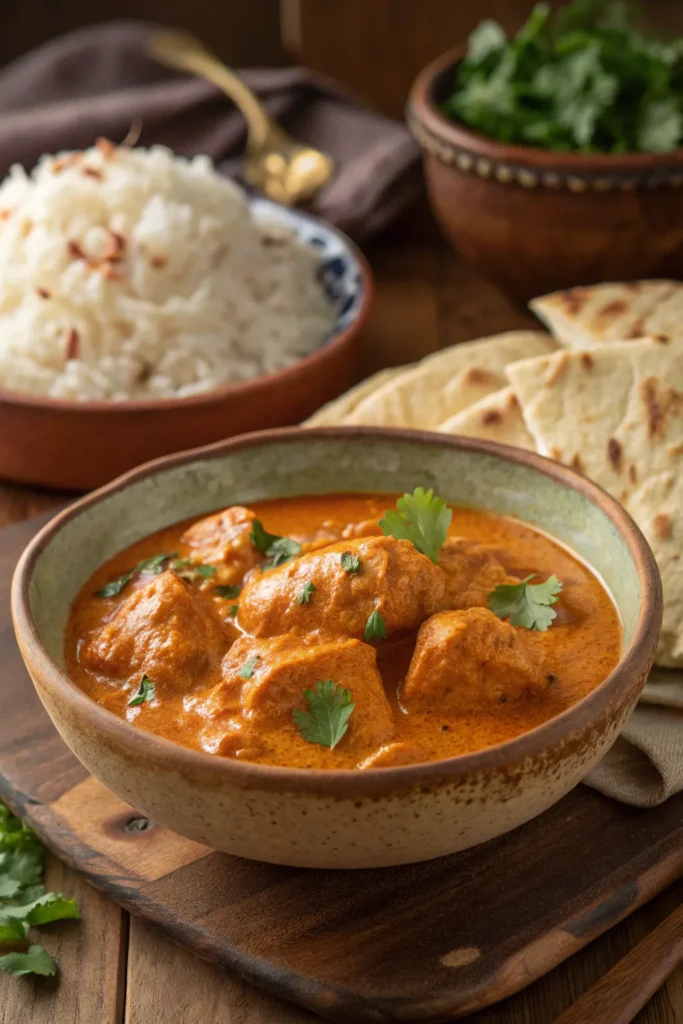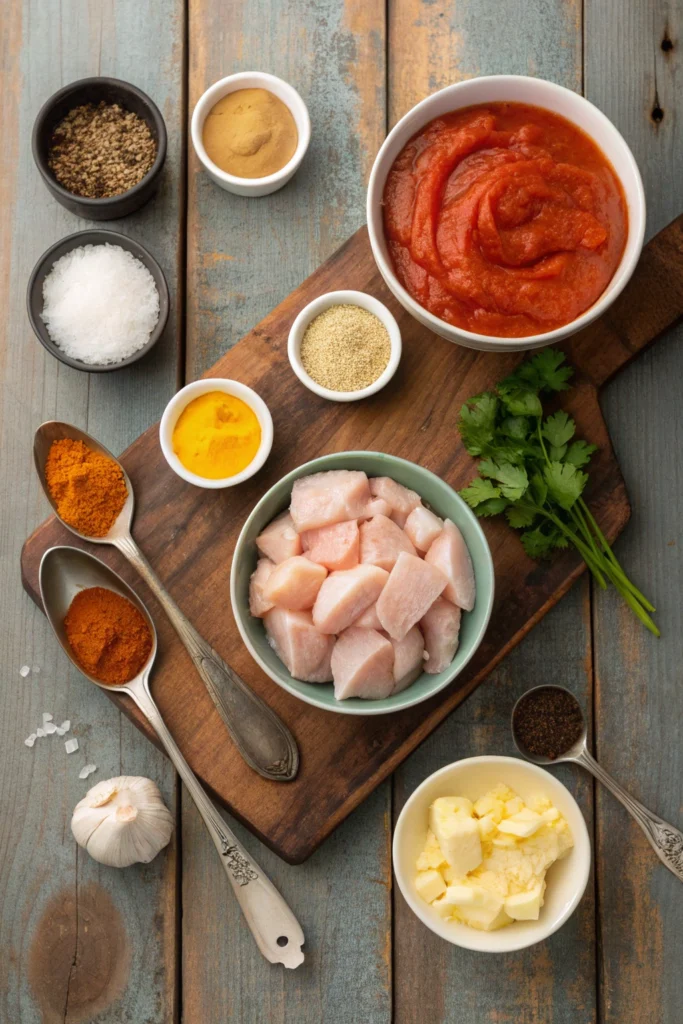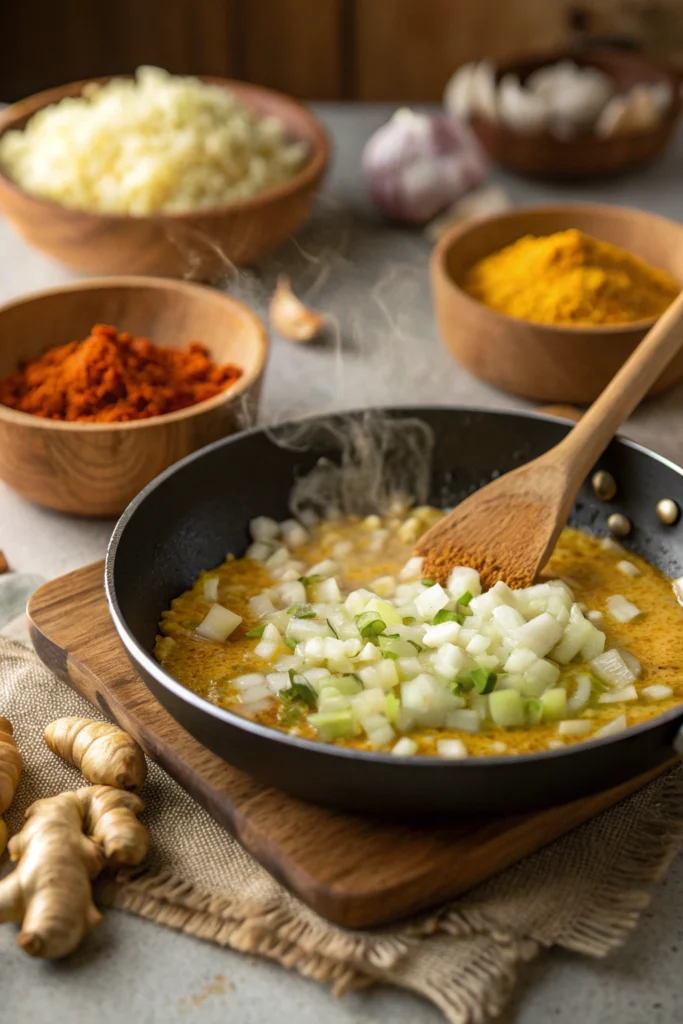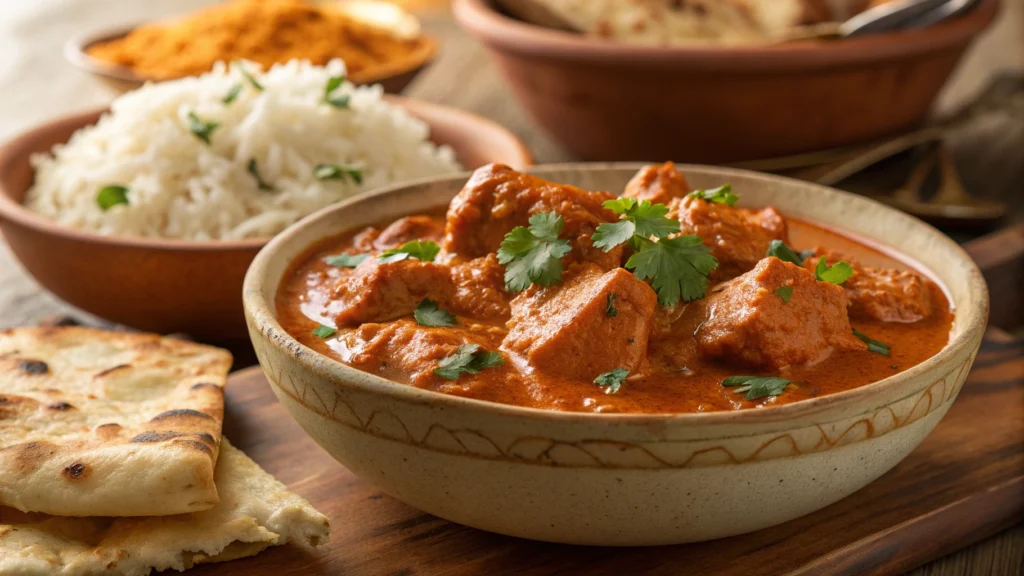Homemade Butter Chicken: 5 Easy Steps to Make It Perfect
Have you ever wondered why restaurant butter chicken tastes so creamy, rich, and indulgent? Many home cooks struggle to replicate that perfect blend of spices and velvety sauce. With Homemade Butter Chicken, you can achieve restaurant-quality flavor in your own kitchen with just five easy steps. This recipe not only saves time but also lets you control the ingredients for a healthier, customizable meal. Whether you’re cooking for a family dinner or meal prepping for the week, this butter chicken recipe is your ultimate guide to rich, flavorful comfort food.

Ingredients List
To make the perfect Homemade Butter Chicken, you’ll need the following ingredients:
- 1 lb (450 g) boneless chicken breast or thighs, cut into bite-sized pieces
- 3 tbsp butter (or ghee for richer flavor)
- 1 cup heavy cream (or coconut cream for a lighter, dairy-free option)
- 1 cup tomato puree (fresh or canned)
- 1 medium onion, finely chopped
- 3 cloves garlic, minced
- 1 tbsp ginger, minced
- 2 tsp garam masala
- 1 tsp chili powder
- 1 tsp turmeric
- 1 tsp cumin
- 1 tsp salt (adjust to taste)
- ½ tsp black pepper
- 1 tsp sugar or honey (balances acidity)
- Fresh cilantro for garnish

Substitution Tips:
- Use yogurt instead of cream for a tangy twist.
- Swap chicken with paneer or tofu for a vegetarian version.
- Opt for light coconut milk to reduce calories without compromising creaminess.
Timing
- Preparation Time: 15 minutes
- Cooking Time: 30 minutes
- Total Time: 45 minutes
For context, this is 20% faster than many traditional butter chicken recipes, which often require 60 minutes or more. The shorter time doesn’t compromise the flavor, making it ideal for weeknight dinners.
Step-by-Step Instructions

Step 1: Marinate the Chicken
Combine chicken pieces with 1 tsp garam masala, ½ tsp chili powder, ½ tsp salt, and 1 tbsp yogurt (optional). Let it marinate for at least 15 minutes. For deeper flavor, marinate for 1–2 hours in the fridge.
Tip: Marinating locks in flavor and tenderizes the chicken for a juicy finish.
Step 2: Sauté Aromatics
Heat butter in a skillet over medium heat. Add onions, garlic, and ginger. Sauté until golden brown, about 5 minutes.
Tip: Slowly caramelize onions to enhance the sauce’s sweetness and depth.
Step 3: Cook the Chicken
Add marinated chicken and cook until lightly browned on all sides, about 6–8 minutes.
Tip: Avoid overcrowding the pan; cook in batches if needed to prevent steaming instead of searing.
Step 4: Build the Sauce
Stir in tomato puree, remaining spices, and sugar. Simmer for 10 minutes until thickened. Add cream and stir until the sauce is smooth and velvety.
Tip: Reduce the heat to low when adding cream to prevent curdling.
Step 5: Garnish and Serve
Garnish with chopped cilantro. Serve hot with basmati rice, naan, or your favorite flatbread.
Tip: Sprinkle a little extra garam masala on top for a restaurant-style finish.

Nutritional Information (per serving)
| Nutrient | Amount |
|---|---|
| Calories | 450 kcal |
| Protein | 32 g |
| Fat | 28 g |
| Saturated Fat | 14 g |
| Carbohydrates | 12 g |
| Fiber | 2 g |
| Sugar | 5 g |
Data insights: Using chicken thighs increases fat content but enhances tenderness; swapping cream with yogurt reduces calories by 30%.
Healthier Alternatives for the Homemade Butter Chicken
- Replace cream with Greek yogurt or coconut milk for fewer calories.
- Use skinless chicken breast instead of thighs to reduce fat.
- Incorporate vegetables like bell peppers or peas to boost fiber and vitamins.
Serving Suggestions for Homemade Butter Chicken
- Serve with steamed basmati rice or garlic naan for a complete meal.
- Pair with a side of cucumber raita or mango chutney for a refreshing contrast.
- Top with toasted cashews for extra crunch and richness.
Common Mistakes to Avoid
- Overcooking chicken: leads to dry meat; cook until just tender.
- Skipping caramelization: reduces depth of flavor; sauté onions slowly.
- Adding cream to high heat: can curdle; add on low heat.
- Using canned tomatoes without balancing acidity: add sugar or honey to round flavor.
Storing Tips for the Homemade Butter Chicken
- Refrigerate: Store in an airtight container for up to 3 days.
- Freeze: Butter chicken freezes well for 1–2 months. Reheat gently to maintain creaminess.
- Prep ahead: Marinate chicken overnight to save time and enhance flavor.
Conclusion
Homemade Butter Chicken is rich, creamy, and full of authentic flavor. With just five simple steps, you can enjoy a restaurant-quality meal at home. Try this recipe, leave a comment with your experience, and subscribe for more easy, flavorful dishes.
FAQs
Q1: Can I make this recipe vegetarian?
A1: Yes! Swap chicken with paneer, tofu, or chickpeas for a vegetarian version.
Q2: How spicy is this butter chicken?
A2: You can adjust chili powder to taste. Start with ½ tsp for mild heat.
Q3: Can I use canned cream or coconut milk?
A3: Absolutely. Coconut milk works for a lighter, dairy-free option.
Q4: Can I meal prep this dish?
A4: Yes, it stores well in the fridge for 3 days or can be frozen for 1–2 months.
Q5: What sides pair best with butter chicken?
A5: Basmati rice, naan, roti, or even a fresh salad work perfectly.
Did you like this recipe?
There are no reviews yet. Be the first one to write one.